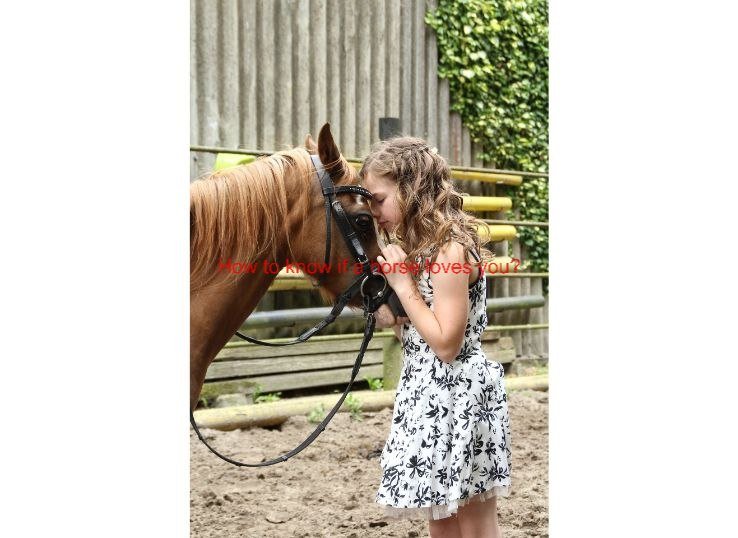How to Teach a Horse to Ground Tie? [ New Guide]
![How to Teach a Horse to Ground Tie? [ New Guide] 1 how to teach a horse to ground tie](https://animalpedias.net/wp-content/uploads/2022/02/how-to-teach-a-horse-to-ground-tie.jpg)
Whether you are riding your horse or dismounting to clear a path, you must make sure that he knows what you want. If you tell him to remain still, he should stand without constant prompting. To achieve this goal, you should know how to teach your horse to ground tie.
Ground tying shows a horse’s high level of self-control and discipline. Working horsemen find this skill extremely useful, whether they’re trail riding, working with their horses, or simply exercising them mentally!
You should make sure your horse can stand quietly when tied before beginning to ground tie. A quiet horse will make your life easier and will usually be welcomed anywhere.
Table of Contents
Step by Step guide on How to Teach a Horse to Ground Tie
If you are learning ground ties, patience will be a key factor since, like when riding, you must build a foundation of safety and soundness. You are training against a horse’s natural inclination to follow an alpha or leader, so you are working against years of evolution and instinct.
However, it is possible! The horse that naturally struggles to stand still while tied has probably never been taught to do so. It does not mean that a horse is taught to stand tied because it is halter trained.
Being tied to a post or in cross ties can be a difficult situation for a horse, especially if it is a flight animal. They may feel trapped because of fear, claustrophobic fear, or past bad experiences.
Teach Him to Stand Still.
To begin with, getting them used to stand still when tied is the essential step. Spend some time getting your horse used to being very still while tied. Provide slack, so they don’t feel trapped, but not so much that they feel unsupported.
Don’t keep them too short, either – don’t keep them on a tight lead. If you’re using hitching posts, always tie them around a horizontal post, not a vertical one, so that they cannot break away from the hook.
The last thing you want is for your horse to further injure itself if he freaks out and pulls back. You need to keep a close eye on them while they are tied and correct errors as soon as they occur. As an example, if they move a leg while walking, immediately ask them to put it back into its original position.
To learn that standing still from the very beginning is easier than being corrected and repositioned constantly, as with all other training, a horse must be instructed enough times and in a clear manner.
Eliminating the Need to Tie Your Horse
Next, you must remove all physical ties that your horse has – and replace them with yourself! You should hold the lead while facing your horse. Next, you step backward. You should ask the horse to return to its original position if it moves.
The first step is to take steps away from their heads, not directly away from them. The horse may interpret this as a signal to follow you. Petting her down the back is a better strategy than stepping away from her rear end. In this way, you can leave without attracting your horse’s attention.
Lay Down the Lead
It’s time to test your horse’s stickiness after he has been respecting your leadership. Make sure he stands squarely. Lead him by holding onto the end of the lead. You may want to use a loud “whoa” to get the horse’s attention.
To prevent the lead from pulling the halter sideways and causing your horse to move, the lead must hang straight from the horse’s head. You can correct your horse with a large wave if his head turns too far or he takes a step.
If you want the correction to go through the longer lead length, you will have to exaggerate your movement. If he sees that your correction is effective, he will be concerned about getting into trouble and back up a step.
If you don’t apply enough pressure when you correct him, he won’t change his behavior. Try stepping from side to side around your horse while holding the lead in this position, so you can move from side to side without him moving, and you only need to correct him rarely.
Tack Up
Whenever your horse consistently stands still without assistance, you can walk around him without causing him to stumble, and you rarely must correct him; you can start this exercise in your normal tack. Put the bridle and reins on your horse.
Keep loop reins securely over his head to avoid entanglement but let split reins drape down to simulate the weight and feel of the rope. You should ask your horse to stand square while saying “whoa” and stepping back.
You should immediately approach your horse if it starts moving and say “whoa” with sternness. Don’t use the same wave technique that you used when leading. the lead.
Pick up the reins instead, and gently guide your horse to his starting position by cueing him with them. Immediately command “whoa” again.
Tying Tips
Always tie your horse higher than the withers. When you tie a horse lower than wither height, and your horse pulls back, then the angle will set him at risk for spinal injury or a broken neck. Additionally, don’t deliver your horse loads of rope once tied; I like to provide a tied horse only around 2 feet of rope. Preferably, tie to an above tree branch that will provide a little if the horse pulls.
If fastening to a post or additional non-flexible position, tied to a loop on an elastic tire inner tube that makes the method of tying safe. You should not use the flexible ties having snaps on the ends as they occasionally break if a horse pulls and pushes the snap via the air at extraordinary speed.
Frequently Asked Question
Q: Tying horses down is bad for them?
No, that is not true! Tying the horse down limits its freedom of movement. Tie-downs can be dangerous for horses if they are not trained properly, especially if they are not used to them.
Q: Should horses be tied up?
Veterinary emergencies include tying up horses if they show signs such as excessive sweating, resistance to movement, and urine that appears dark.
Q: How long should you tie a horse up?
The horse should have about 2 to 3 feet from the object it is tied to. It should be able to move its head comfortably at this distance. The excess rope can cause injuries.
Conclusion
A horse’s ability to tie itself firmly to the ground is not only useful but plays an important role in bonding with him. You can step away without fear from your horse when needed, not only because it is useful for you, but also because it proves that your horse does listen to you.
The relationship is rewarding when it is fostered and cultivated. Therefore, since ground tying provides so many benefits, you must know how to teach your horse to ground tie. With this article, we hope to help you teach your horse how to ground tie.






